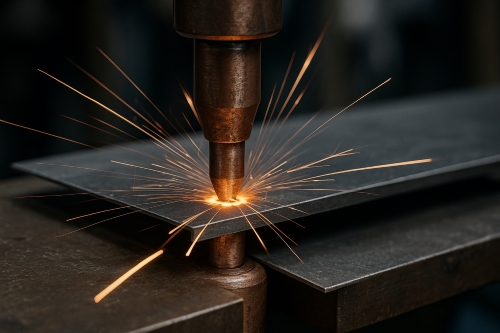Common Types of Resistance Welding
Introduction
Resistance welding is one of the most widely used joining processes in industries. This is a method that uses electric current and pressure for joining metal parts. In resistance welding, joining is fast, and the results are generally quite reliable. This weld assists in making solid and durable joints without extra filler material. There are several forms of resistance welding. These include spot welding, seam welding, projection welding, butt welding, and flash welding. Each of these methods has its unique setup and specific applications.
Resistance Welding
Spot welding is a simple, efficient method utilised in joining overlapping pieces of metal. Two copper electrodes firmly press against the metal pieces. When electric current passes through, the heat generated melts the metal at a small, focused spot. The rapid cooling of metal results in a strong bond. This is a very common method used in the manufacture of automobiles. Most of the car bodies are held together by spot welds in their sheet metals. The process has a rapid cycle time. Many facilities manufacturing products using this technique produce hundreds of spot welds every minute. Heat is controlled not to affect the entire structure to ensure that the joints can withstand stress. Spot welding is also extensively used in making household appliances. The simplicity of the method makes it essentially easy to automate. Many modern factories include robots that perform spot welding with consistency and repeatability.
Seam Welding
Seam welding resembles the process of spot welding but results in a continuous weld joint. Instead of discrete electrodes, rollers or wheel-shaped electrodes are applied. This technique results in a neat, unbroken groove along the seam of the parts. It is particularly suitable for leak-proof joints. Seam welding is used in industries to seal the edges of stainless steel bottles, storage tanks, and pipes. The continuous weld does not leave any void that could become the weak point of the joint. Seam welding is suitable for parts where it is convenient to have a uniform weld seam. The process is quick and integrates well with automatic assembly lines. Seam welding has been in practice for decades in the manufacture of containers and packaging units. The uninterrupted flow of current assures that the weld would be sound as well as appealing in appearance. Seam welding is also put into use in fabricating parts for large water and gas pipelines.
Projection Welding
The principle of projection welding involves the use of small projections or raised sections on one or both parts to be joined. These raised areas focus the welding current into a small spot. The process transfers heat only to the projection, which quickly fuses with the adjacent surface. This method is efficient for joining small components that have multiple weld points. It reduces the need for precise positioning, as the projection itself acts as a guide. Projection welding finds wide usage in the automotive sector where many similar welds are needed on one and the same part. The electrical appliance manufacturing industry also uses this form for light and precision joining. Tests show that projection-welded joints offer high fatigue resistance. The quality of the method is maintained in mass production, reducing the time required for adjustments with every single weld.
Butt Welding
Butt welding differs from other forms of resistance welding. During this process, pieces of metal are arranged edge to edge. The joint is created when the edges meet perfectly. An electric current flows through the aligned edges. Pressure applied to join the parts serves as the means of resistance. As the molten metal cools down, it forms a very strong bond along the entire edge. In the fabrication of pipelines, structural parts, and others, butt welding sees extensive applications. The strength lies in the full-thickness joint that this method produces. No overlapping is required; hence, the finished product has a smooth and even surface. This welding technique becomes the only resort where a neat and sound joint is required. Many heavy-duty applications pertaining to construction and shipping industries rely on the reliability of butt welded joints. The process handles high stress and vibration, thus proving its worth in critical applications.
Flash Welding
Flash welding is a method that joins pieces of metal together by a sudden burst of energy. During the process, the parts are brought together, and a high current is passed through the joint. In this process, there is a flash of molten metal at the contact interface. The flash cleans the metal surfaces by burning off any impurities or oxides. After the flash is complete, pressure is applied to forge the joint solid. Flash welding is applied in industries dealing with joining large cross-sectional parts. It finds its application in rail manufacturing for joining rails or in electrical bus bar production. The process is automatic and does not require complicated setup. It ensures cleanliness in the weld area and strong bonding. Due to the fast cycle time and controlled heating, flash welding is energy efficient and economical. What engineers most appreciate about the process is its ability to join dissimilar metals, making it quite versatile for a range of structural components.
Conclusion
Resistance welding is a very important technique for a number of manufacturing industries. Electric current and pressure are combined in this technique to produce strong and consistent joints. Each technique has its advantages: spot welding, seam welding, projection welding, butt welding, and flash welding. These processes have been instrumental in shaping the modern production method. For more information, please check Stanford Advanced Materials (SAM).
Frequently Asked Questions
F: At what speed is spot welding usually done?
Q: Industrial applications can achieve hundreds of weld cycles per minute with spot welding.
F: Which products use seam welding patterns?
Q: Seam welding is common in stainless steel tanks, pipelines, and sealed containers.
F: Are flash welded joints reliable for heavy applications?
Q: Yes, flash welded joints are strong and durable, suitable for high-stress components.
Reference:
[1] K.G. Swift, J.D. Booker, Chapter 11 - Joining Processes, Editor(s): K.G. Swift, J.D. Booker, Manufacturing Process Selection Handbook, Butterworth-Heinemann, 2013, Pages 291-349, ISBN 9780080993607

 Bars
Bars
 Beads & Spheres
Beads & Spheres
 Bolts & Nuts
Bolts & Nuts
 Crucibles
Crucibles
 Discs
Discs
 Fibers & Fabrics
Fibers & Fabrics
 Films
Films
 Flake
Flake
 Foams
Foams
 Foil
Foil
 Granules
Granules
 Honeycombs
Honeycombs
 Ink
Ink
 Laminate
Laminate
 Lumps
Lumps
 Meshes
Meshes
 Metallised Film
Metallised Film
 Plate
Plate
 Powders
Powders
 Rod
Rod
 Sheets
Sheets
 Single Crystals
Single Crystals
 Sputtering Target
Sputtering Target
 Tubes
Tubes
 Washer
Washer
 Wires
Wires
 Converters & Calculators
Converters & Calculators
 Write for Us
Write for Us

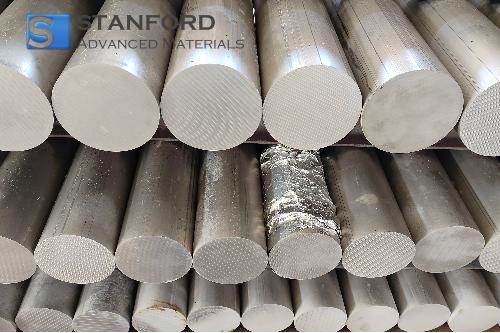
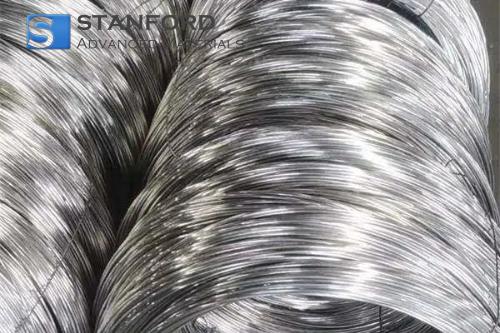
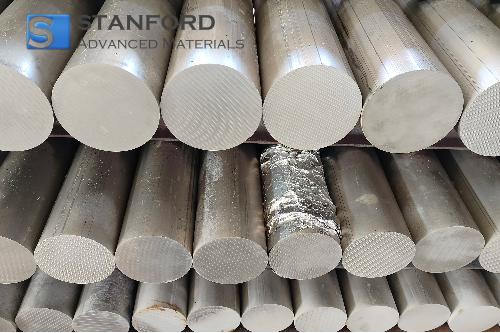
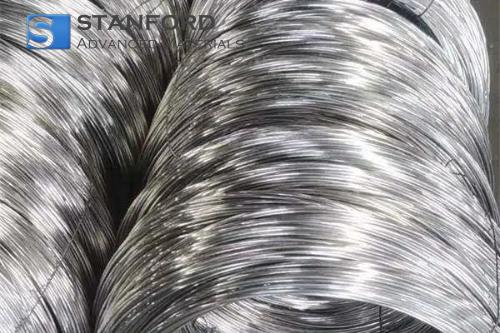
 Dr. Samuel R. Matthews
Dr. Samuel R. Matthews



